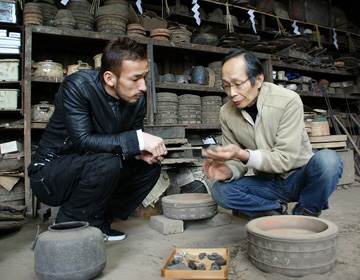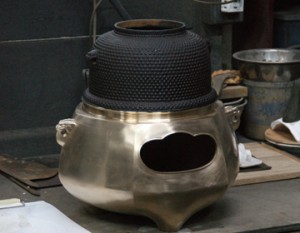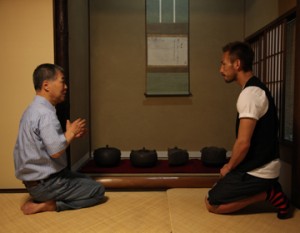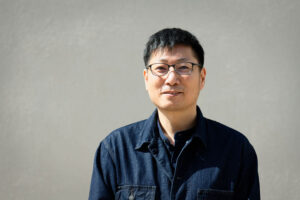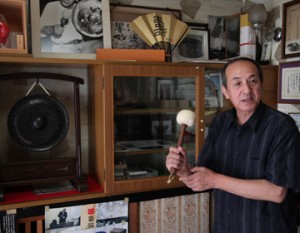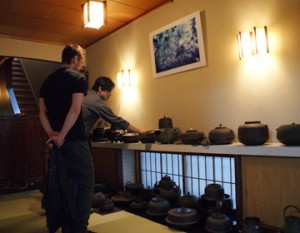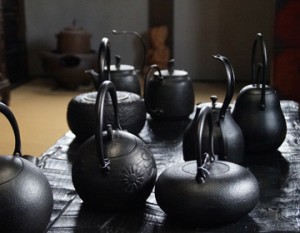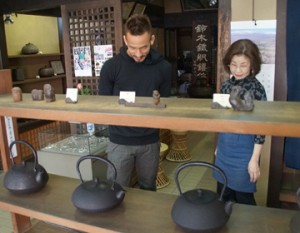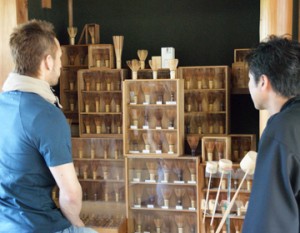Inheriting teal kettle making from his father
Anyone involved in the art of Japanese tea ceremony is familiar with the name Ikkei Kakutani, who was a famous tea kettle maker. He was appointed as a Living National Treasure in 1978, and left many masterpieces until he passed away in 1999. His workshop was succeeded by his son, Masakazu Kakutani.
Having studied and trained under his father, a Living National Treasure, Masakazu has built upon his father’s know-how to come up with his own modern style of tea kettles: simple but with a sharp contour, monotone with a presence.
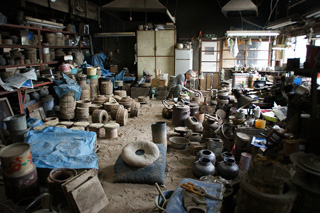
Land where metal workers and tea masters were raised
Sakai is a place where Senrikyu and his master Takeno Jyo-ou were born. Sakai is a traditional place for tea and tea ceremony. It is also a place of metal casting, which is perfect to make iron tea kettles. In the 8th century, a group of craftsmen called ”Kawachi Founders” lived in this area to work and produce copper casting.
The skill of these craftsmen were highly evaluated even by the government at the time, and they were called to Kyoto to repair the Great Buddha of Todaiji and the Great Buddha in Kamakura. They also contributed to spreading the technique of metal casting throughout the country.
Green tea and iron casting — the city of Sakai embraces the history of both, and still serves as a place where many fine pieces are produced.




